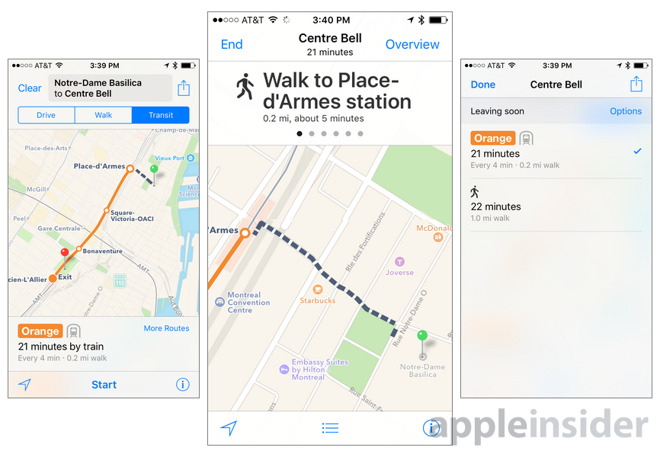This week, the slow and steady roll-out of Apple Maps transit data continued, adding the second-largest city of Canada, Montreal, to its lineup.

Multiple AppleInsider readers wrote in to note that they could now access public transportation data within Montreal's city limits. Montreal is now the second metropolitan area in Canada to gain Apple Maps support, joining Toronto, which was a launch city in 2015.
The addition of Montreal comes one month after transit directions launched in Austin, Tex. That was timed to debut just before the city's popular South by Southwest festival.
When it launched with iOS 9 last year, Apple Maps transit was also available in Baltimore, Berlin, Chicago, London, Mexico City, New York City, Philadelphia, San Francisco, Washington D.C., and 30 cities in China, including Beijing, Shanghai and Shenzhen. Maps were also added to Boston and Sydney in October.
With transit, Apple Maps in iOS 9 offers routes, departure times and other relevant data for buses, trains, ferries and other forms of public transportation. The solution is akin to Google Maps, which has for years provided users with transit routing tools.
In addition to local schedules, transit in Apple Maps gives users a top-down view of underground subway and train stations, a feature unique to Apple's service. Armed with track and time information, commuters can more efficiently plan their routes without getting lost. Further, data is customized for each location, meaning road signs are as they appear in real life.
Apple's Transit feature is made possible by technology gained through key acquisitions like HopStop and Embark, powered by a multitude of data sources specific to each supported location.


